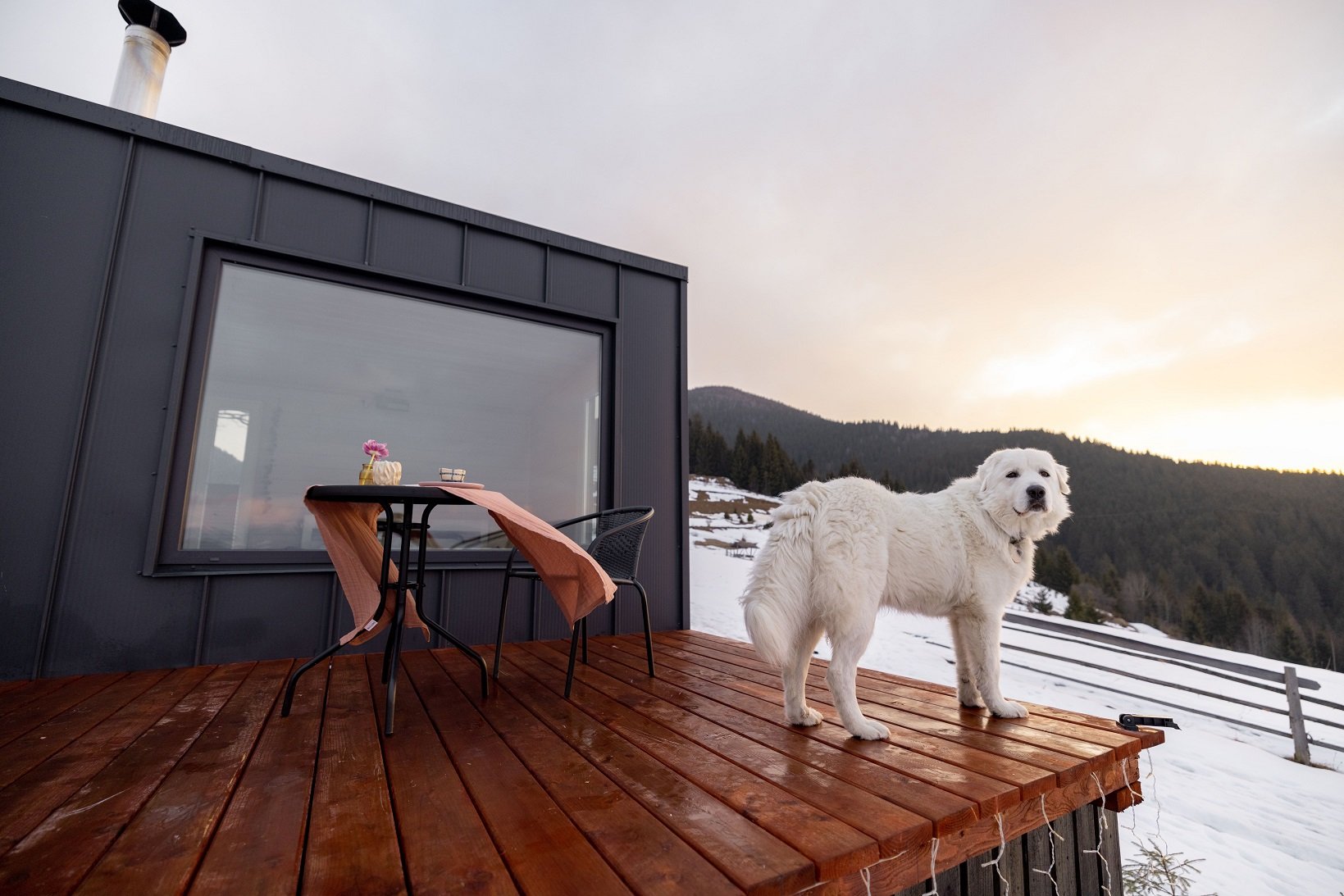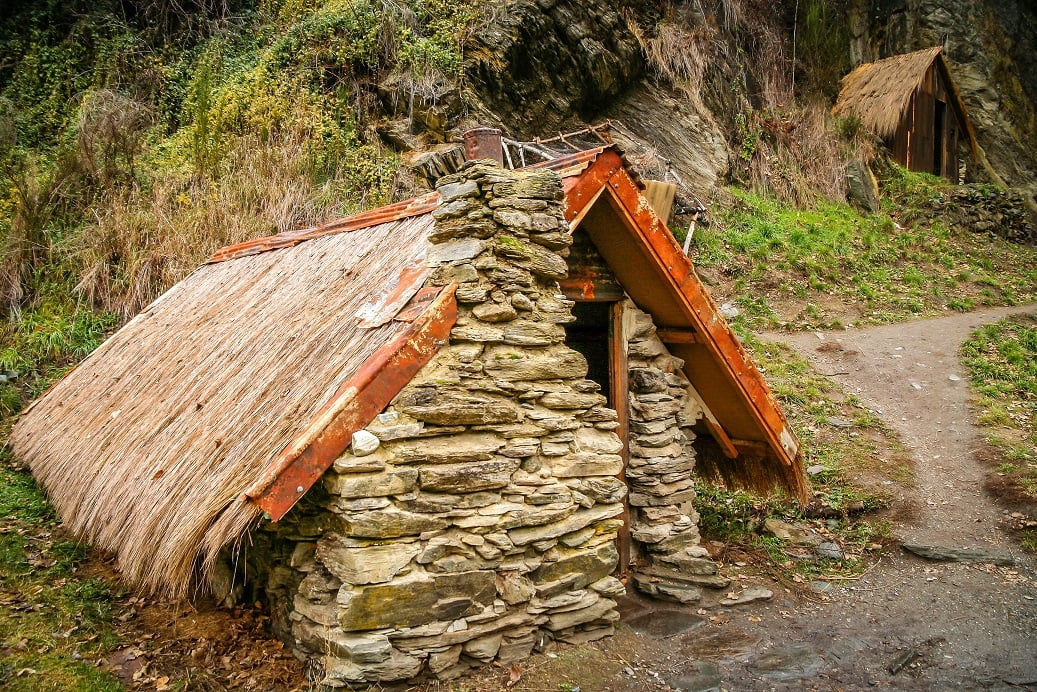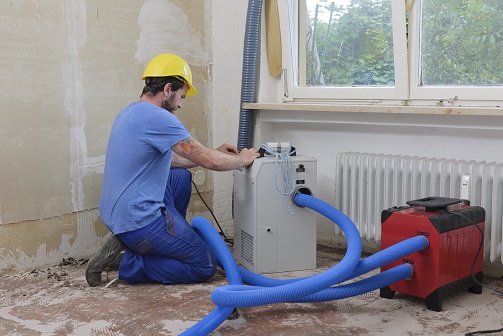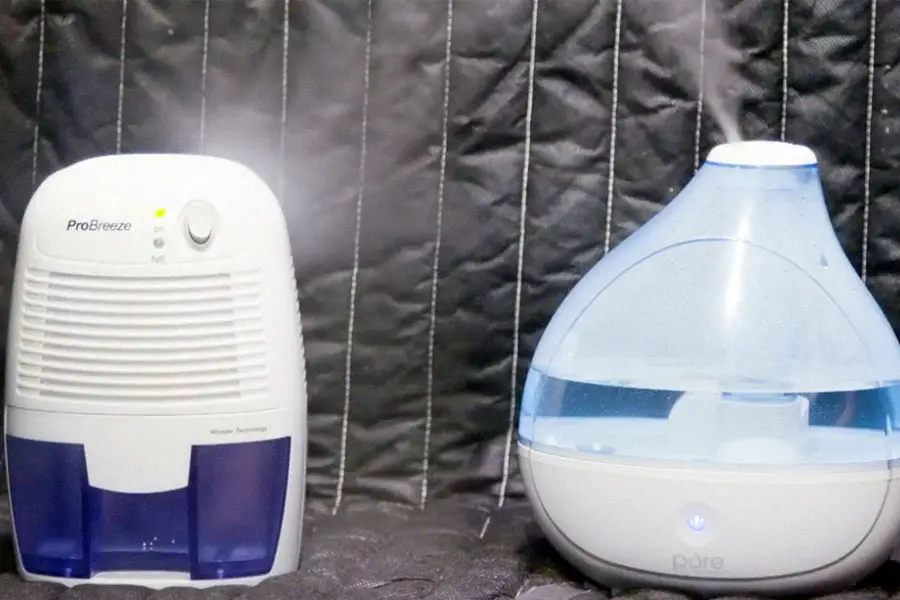
Tiny house painting – How To Choose Paint For Your Tiny House?
Most people prefer to choose white paint their small living space interior. Whether it’s your kitchen, living room or bathroom – it can be difficult to accentuate colors. What color do you choose if you’re not going to go with a hue of gray or white. Light colors such as orange, yellow, violet, red or cool colors such as blue, light purple, and green can give the impression of a larger space, but are very subjective and are held differently in the eye of the beholder. This is why choosing your paint for your tiny house can be difficult, since you may love one type of color – but you also don’t want your house to be too small :P.
Sometimes the light colors are so vibrant that glaring at these colors is unpleasant. You can use dark colors along with light colors in your tiny apartment. However, do not use dark colors in the whole room. Painting the small wall in a room with dark color and the rest of the walls with bright colors can give the illusion of a big room as well as improve the aesthetic quality of your room.
Most people painting their tiny house interior will need to DIY as a professional painter will not spend the time or effort in painting a home smaller than your average sized condo. Therefore, it’s important that you choose colors that can accentuate your home decor, while also ensuring that your home design still says you.
How To Choose Paint For Your Tiny Home?
When it comes to painting a house, the questions raised by most people are “How to choose paint for your tiny house?” and “Can you use ceiling paint on walls?”.
Some other questions you may want to ask yourself are:
What materials is my home made out of? Do I have a natural wood cabin, or a RV style tiny home?
Will I be added wall art or any type of paintings to my tiny home? (thereby taking away from the color)
Do I want my home to be a bold statement? Or do I want to feel more like an oil painting?
While these questions may be a little abstract, they get to the heart of interior design when it comes to Tiny homes.
A non-question is to make certain that you select non-toxic paints. The paints that have harsh chemicals emit harmful fumes even after drying. The harmful fumes linger in a small house and can cause health issues. You’ll want to stay away from acrylic paints as they can leave fumes on your home, clothes and even on your furniture.
Apart from non-toxic paint, you need to get the right type of finish paint. There are matte, gloss, semi-gloss, satin, eggshell, and flat paints. Semi-gloss paints are considered ideal for a tiny house as they can create an opening effect in small spaces.
A Welcoming Front Entry With Natural Light Color Is Essential
The entry of a house gives the first impression of what the entire house would look like. Hence, it is important that you choose the correct paint for the entryway. Normally, the entryway of a tiny house is tiny and narrow. This is why you should choose the colors that can make the entryway look spacious and welcoming.
Warm bright colors such as taupe, white, light green, creams, light tan, light gray, and light blue are best for the entryways. Do not use any dark color to paint the hallways and the mudroom unless you want the entryway to look like a ghost alley.
Paint The Living Rooms With Cool Colors
The first room which everybody will see after going inside of your house is your living room. You and your guest will spend the most time in this room. From this perspective, we can say that the living room is the most important room of your house.
Most people generally choose warm colors for their living room. You can also choose warm colors for your living room. Although painting a tiny room with warm colors can make the room appear bigger, it is mundane and boring. Rather go with cool colors like pale or dark blue, soft black, cool gray, and lavender. Cool colors matched with perfect interior decor can make the room look bigger and cozy.
Create A Sanctuary With Bedroom Color Ideas
The bedroom is the place of relaxation after a long working day. So, the aesthetic quality of the bedroom should be appealing. Using relaxing colors can make the bedroom appear bigger. The relaxing colors are white, yellow, grey, violet, pink, green, and blue. Research has shown that people tend to sleep for a longer period in the blue bedroom. If you do not prefer blue, you can select another relaxing color.
People like to use earthy and neutral tones like gray, brown, yellow, orange, or green to paint their bedrooms. These tones can highlight the interior items in a room by receding into the background. Avoid using stark white as it might lead to a bland bedroom. You can choose butter, ivory, and cream instead of white.
Consider Neutral Or Accent Wall Kitchen Paint Ideas
Neutral and accent colors are considered the ideal colors for a small kitchen. These colors are more reflective than dusky colors. Neutral or accent colors reflect light and make walls recede. Consequently, they increase the sense of empty space around the kitchen.
You can consider painting the walls with soft pumpkin color. This color is not so intense but vibrant. White, cream, beige, mint green pastel, taupe, and soft gray are also good for painting a kitchen. You can contrast these colors by using wood stain colors that eventually lead to feeling warm and welcoming in your kitchen.
Create A Tranquil Tiny home Bathroom With Soft Colors
Bathrooms look tranquil and relaxing with soft colors. Soft colors can also flatter your skin tone. Pale yellow and straw-like yellow colors are excellent for bathrooms as they mimic sunlight. If you put these colors on, it will feel like there is abundant natural light.
Navajo white, cream, ivory, gentle tan, classic white, vanilla, blush pink, beige, and light gray can make the small bathroom appear bigger. A bathroom painted with sky blue paint gives a coastal vibe. Painting the ceilings the same color as the walls can visually enlarge the perceivably enlarge the space of your bathroom.
How to choose the exterior paint of your home
Tiny homes are a little easier to paint due to the less surface area :). It’s quite easy to give your tiny home a mini makeover by simple adding some style and different color hues to the exterior of your home. While some many choose bold colors like black (for heating) or red (to make a statement), you’ll also want to choose something that can work with your surroundings.
Ultimately, we at SuperTinyHomes believe natural colors like earth brown or even light gray are the best colors because they resonate well with nature.
Closing Thought
Choosing paints for your tiny house can be exciting and fun. The main idea of choosing paint for a small area is to create an illusion of a big area. The suggestions given in this guide are enough to do this illusion for you. Go through the guide and pick some sample strips based on the recommended colors given in this guide. Now apply the strips directly to your walls and choose the paints that you think meet your style.

Tips for Designing Your Dream Custom House Plan
Looking to custom design your dream home but lacing ideas? Well, you’re not alone. Designing a dream tiny custom house plan is very demanding. You need to put a lot of factors into consideration to bring your dream home into a reality.
Where do you start to design a dream custom house plan? You need a plan that a builder or an architect can follow. You need a professional to bring his expertise into your plans.
In the article, I’ll show you simple steps through which you can design your dream custom house plan. Continue reading below.
Tips for Designing Your Dream Custom House Plan
Every person has a clear vision of how they want their homes to look. The biggest challenge is bringing the design in your mind into the paper where an architect or builder can implement it.
In most cases, you’ll have to consult with an architect of a builder to actualize your plan. Even before you start the designing process, there are a few questions you need to answer. First, why build a home instead of buying one?
If you’re looking to save on costs, building a barndominium is highly recommended. For example, a barndominium in Florida construction will cost way less as opposed to buying a traditional house. That’s a good reason to design one.
Secondly, you need to understand the room sizes and the need for those sizes. Knowing the accurate room sizes will be crucial when coming up with cost estimations.
What are the current room measurements in your home? Do they meet your needs? These questions will help you come up with the correct room measurements. It’s crucial that every detail of your home design plan matches your family’s lifestyle.
The layout of the structure, rooms, and exterior must suit your family’s lifestyle. Do you enjoy BBQ outdoors with family and friends? If yes, then this must be considered when coming up with a plan. You can include a plan with a sheltered cooking area outside.
Some homeowners love open kitchens that connect to dining rooms. Such designs ensure they can keep in touch with guests and friends while cooking.
Let’s see the steps through which you can design your dream custom house plan.
Steps To Designing A Dream Custom Home Plan
Set A Budget
The first thing when you design a custom home plan is setting a budget. A budget will go a long way in determining the plan. It’s the least fun part when designing a home. However, it’s a crucial one that will affect every step of planning.
Expenses can add pretty fast for custom designs. A budget will help you eliminate unnecessary items. Here are some areas to budget for:
- Architecture fees
- Foundation
- Framing
- Permit fees
- Site work and inspections
- Exterior and interior finishes
- Plumbing, electrical, and HVAC
- Deck and driveways
In addition, you need to set some extra money aside for unexpected problems. For example, bad weather might damage previously finished work.
Placement
Next, you must think and decide on a suitable location. If you’ve already acquired land, then you need to decide on the exact spot to build.
How will the house be oriented? This is important as you need some areas of the house to get more light. For example, you want the bedroom facing away from the sun east where the sun rises.
Are there restrictions on where you plan to build? This is a good time to familiarize yourself with local building codes. Location is crucial and can affect drainage and energy savings.
If you’re building in cool areas, then choosing a location with direct sunlight is important. In warmer climate areas, consider building in areas where you enjoy the shade.
Are you looking to add more structures to your house? If yes, think of where they will fit and how they’ll affect your building.
Put Family Needs First
When coming up with any custom house plan, you need to put the family’s needs first. What is the ideal living space for you and your family? Ask family members for ideas.
Start by finding what you love most in your current home. Go ahead and include the ideas in the plan. What were you missing in your current home? Include it in the plans.
It’s important to understand your family’s living patterns and design a home that will put their needs first. Which rooms create a traffic jam when everyone is at home? Design such rooms in a way that they can accommodate every person.
To put it in the simplest words, you need to match your home to your lifestyle. For example, how many bedrooms you design depends on the family’s needs. Create a spacious living room or kitchen if family members love to congregate there.
Do you need closets in the bedroom in a different storage room? You can decide on such issues depending on your family’s lifestyle. Here are a few things to consider:
- The size of the home
- Need for rooms to be connected
- Type of furniture to be added and appliances like ovens or fridges.
- Silence levels are needed in the rooms (especially for sleeping)
- Amount of light needed
Answering all these questions and creating notes on the same will help you come up with a clear custom design.
Choose A Style
With a clear understanding of what you need, you can now choose a style for your home. Do you want a traditional home design or the barndominium home style?
For example, an open-style home is great for homes that need a lot of space. Barndominiums offer spacious rooms as opposed to traditional homes.
This will help you create suitable floor plans. If you host friends and family regularly, then consider a style with spacious living quarters. Consider modern home designs with fewer dividing walls. Some of the common styles you can consider include:
- Farmhouse
- Craftsman
- Colonial
- Contemporary
- Mid-century modern
- Cottage
- Ranch
You can search for samples of styles online and choose one that speaks to your heart.
Write A Brief With Your Builder Or Architecture

With every detail taken down, you need to write a brief with your architecture. You can have a sit down with your architect and go through the plan together. For your home plan to come as envisioned, you’ll need to explain the plan in detail.
In some cases, the architect might give you a questionnaire to fill out. This is aimed at getting a clear understanding of your custom design and coming up with a professional design.
Remember to ask questions that you don’t understand. This is your custom design and it must come out as you’ve designed it.
Bottom Line
Well, that’s it from me! Designing your dream custom house plan is a lot easier when you know what to do. I know designing a home from scratch can be intimidating. However, it’s also fun and exciting knowing you’re creating and fulfilling a dream home.
Follow the steps above and you’ll soon build a dream custom home.

Can a Dehumidifier Make You Sick?
When you use a dehumidifier, it helps remove excess moisture (like from a ventless dryer or washing machine running), which makes your house less conducive to allergens like dust mites, mold, and mildew. You will be able to spend less time cleaning your home when you reduce dust.
Knowing how a dehumidifier works, it’s pluses and minuses and the whether it can make you sick are important things to take into account when purchasing one! We hope this article helps you!
What’s the difference between a Humidifier and dehumidifier

If you didn’t know, humidifiers are used to add moisture to the air. Humidifiers are best used in the wintertime or in a very arid location like close to a desert (think Arizona, Dubai, Northern Texas). Dehumidifier consequently does the opposite of humidifier where it extracts the moisture out of air. The unit of measurement that both of tools run off is absolute humidity which measures grams of water vapor in the air in cubic meters.
Using a dehumidifier will also improve the efficiency of your air conditioner, which will save you money on electricity. Dehydration, respiratory discomfort, and other health issues can be caused by high humidity and poor air quality.
Enhanced asthma attacks, tiredness, sinuses issues, and mental exhaustion are also common symptoms. By using a dehumidifier, you can reduce discomfort and lower the humidity.
Can a Dehumidifier Make You Sick?
A dehumidifier may or may not work for everyone. Utilizing one in your home may have some unintended consequences. Although it has some advantages, there are also some disadvantages of dehumidifiers. Here are the 8 disadvantages of dehumidifiers that we can find!
1.Dry the air
Dry eyes, as well as the skin, can sometimes be caused by a lack of humidity, as those organs of our body require water to keep healthy.
Without it, the eyes become irritated and uncomfortable. Low temperatures can impact wooden furniture in the home, causing fractures and a loss of structural strength.
2.Sore Throat Issues
Dry air in your space can be one of the reasons for a chronic sore throat. However, dry air is sucked out of your home by air conditioners and heaters, which reduce humidity levels.
When you have a sore throat, the best thing you can do is keep your indoor air moist. Warm, salty water can also be gurgled. Every time you take a breath of dry air, you will feel discomfort.
It’s simpler to acquire a sore throat when the air is too dry than when the air is humidified. Furthermore, colds are made worse by dry air.
3.Cost of Electricity
When you run your dehumidifier for the whole day, this can cause a huge amount of electricity bill. To keep your energy bills under control, you need to select an energy-efficient air dehumidifier. While they won’t cost as much electricity as a portable heater, your bill can be considerable if you’re running a dehumidifier 24/7.
Less expensive dehumidifiers generally use more energy which causes higher energy costs. This means that while less-priced dehumidifiers could be cheaper, they will cost you more in the long term.
As a homeowner, you’ll need to balance the benefits of optimizing energy efficiency and having proper air dehumidifying.
Purchasing a high-end, energy-efficient dehumidifier can be a difficult option for those on a smaller budget. It’s crucial to consider the additional benefits and drawbacks of dehumidifiers before deciding whether or not to buy one.
4.Water Tank Issue
Regularly empty the unit’s water tank of your dehumidifier. If it is left for a longer period of time, mold can grow on the vessel. This can produce a range of health problems and allergic reactions.
You should also keep an eye on the humidity level in the air to make sure it doesn’t drop too low. While high humidity levels can cause breathing issues, low humidity levels can cause many health issues, including making you more prone to the flu and cold.
5.Noise Levels
Certain dehumidifiers can generate up to 50 decibels of noise. Some individuals think that the noises help them sleep faster and more calmly. If noises bother you at night, a dehumidifier could be an inconvenience.
A desiccant dehumidifier can be a good option if you’re worried about noise. A desiccant dehumidifier, in general, produces less noise. Furthermore, desiccant dehumidifiers have the disadvantage of being more expensive upfront and operating in the long run.
Whenever you buy a dehumidifier, make sure you know how much noise it makes. In the same way that cheaper units generate more energy, they also produce more noise. Therefore it’s worth investing in higher-end versions.
6.Heat Issue
Desiccant dehumidifiers can produce warmer air. It can produce air that is up to 50 degrees Fahrenheit warmer than the air that goes in the dehumidifier. If your home is cold, this could reduce the amount of money on your heating cost.
However, if you reside in a hotter area, you should avoid desiccant dehumidifiers. Compressor dehumidifiers are a better option for you.
7.Maintenance
The dehumidifier’s water bucket isn’t the only thing that has to be washed and refilled. A dehumidifier is made up of many parts, all of which need to be cleaned on a routine basis. It occurs because the moisture in the air will accumulate inside them.
Check the exhaust grilles, filter, and coils regularly to make sure that they are clean and functioning correctly. Mold can grow inside a dehumidifier if this is not done. Your health will suffer as a result of this.
8.Headaches
Dry air is going to give you a headache. The mucus membranes in the nasal canals dry up, which causes sneezing and the feeling of being stuffy. As a result, the membranes become irritated and uncomfortable as more dry air travels over them.
As a consequence, headaches are the direct outcome of poor indoor air quality. Low humidity can also generate dry air because most items in the home off-gas when the air is dry. You could be startled to learn that building materials emit formaldehyde gas when the air is too dry.
If you inhale these, you could get headaches. Other seemingly innocuous things can cause headaches too. Such as window curtains, shower curtains, and wall paint, which could contain dangerous compounds. As a result, they can release these compounds, albeit in trace amounts which causes headaches.
Are Dehumidifiers Really Dangerous?
Dehumidifiers are pretty safe to use. Water leaks and fire threats have been avoided by installing safety measures. The critical thing to be concerned about is the humidity in your home becoming too high or too low. If you measure the humidity level of your room just like in general, then using a dehumidifier. Most dehumidifiers are used to reduce the growth of mold by taking the moisture out of air, leaving the air dryer and less musty.
Wrapping Up
Dehumidifiers are an excellent tool for lowering the humidity in your home. They can help you keep your home’s temperature acceptable during high humidity seasons. They’re also great for eliminating allergens like mold spores and dust mites, flourishing in humid environments. They do have drawbacks, just like any other device. Generally, you must clean it by keeping the water tank empty. Then cleaning the machine on a regular basis to prevent mold and germs from building on them.
Frequently asked questions about dehumidifiers
Can dehumidifiers have side effects?
Yes, there are a number of side effects that dehumidifiers can have on users. Sickness, irritation and dry eyes are some of the many common side effects. Since many different dehumidifier products exist, always read the manufacture instructions on how to use your dehumidifier and cases on when to de-continue use. While dehumidifiers may be good for season allergy symptoms, over usage can cause ailments like dry skin and coughing.
Are dehumidifiers good for allergies?
Dehumidifiers can help reduce allergy symptoms and decrease the amount mold, dust mites and mildew circulating in the air, thereby allowing you to breath cleaner air. However, like anything – over usage may be detrimental to you and your family, so consult your manufacturer’s instructions for best practices.
Can dehumidifier help with COPD?
Yes, COPD symptoms can worsen when there are high levels of humidity. Therefore, due to dehumidifier’s reducing indoor humidity – it makes sense that it can help alleviate the symptoms of COPD. Read more about COPD and humidity on MedicalNewsToday.com.